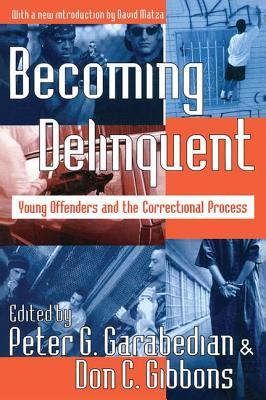Addresses the social experiences of juvenile offenders in the correctional machinery and the career effects these experiences have on offenders. This book follows offenders from apprehension through court appearance, probation and institutionalization, showing how the organizations operate and the role definitions of the people who man them.
This book addresses the social experiences of juvenile offenders in the correctional machinery and the career effects these experiences have on offenders. It follows offenders from apprehension through detention, court appearance, probation and institutionalization, showing how the organizations operate, the role definitions of the people who man them, and the views of the correctional organizations held by members of the public. It is a valuable supplement to courses in deviance, criminology, social problems and organizational analysis. The book begins with the delinquent population and endeavours to identify the major characteristics of juvenile lawbreaking. It separates youths who most often remain as "hidden" delinquents from those who are observed and apprehended. The text then moves through the major parts of the correctional machinery in much the same way as offenders are processed through it. Information on each topic is marshalled in accordance with five dimensions; the nature of the organization; the perspectives of the consumer (the public); the perspective of the employees; the perspectives of the offenders; and the impact of the agency upon offenders. Thus, a major focus of the book is an organizational analysis, a basic feature of the current sociological perspective. This work, on first publication in 1970, was one of the first to tackle the growing skepticism as to the beneficial aspects correctional institutions may have on the young offenders, and the analysis of those benefits. The readings attempt to show something of the impact of correctional experiences on juvenile delinquents, and suggest that the overall effect is to drive deviants further into deviant activities rather than attaining the desired goal of rehabilitation.
Get Becoming Delinquent by at the best price and quality guranteed only at Werezi Africa largest book ecommerce store. The book was published by Taylor & Francis Inc and it has pages. Enjoy Shopping Best Offers & Deals on books Online from Werezi - Receive at your doorstep - Fast Delivery - Secure mode of Payment
 Jacket, Women
Jacket, Women
 Woolend Jacket
Woolend Jacket
 Western denim
Western denim
 Mini Dresss
Mini Dresss
 Jacket, Women
Jacket, Women
 Woolend Jacket
Woolend Jacket
 Western denim
Western denim
 Mini Dresss
Mini Dresss
 Jacket, Women
Jacket, Women
 Woolend Jacket
Woolend Jacket
 Western denim
Western denim
 Mini Dresss
Mini Dresss
 Jacket, Women
Jacket, Women
 Woolend Jacket
Woolend Jacket
 Western denim
Western denim
 Mini Dresss
Mini Dresss
 Jacket, Women
Jacket, Women
 Woolend Jacket
Woolend Jacket
 Western denim
Western denim
 Mini Dresss
Mini Dresss






























































